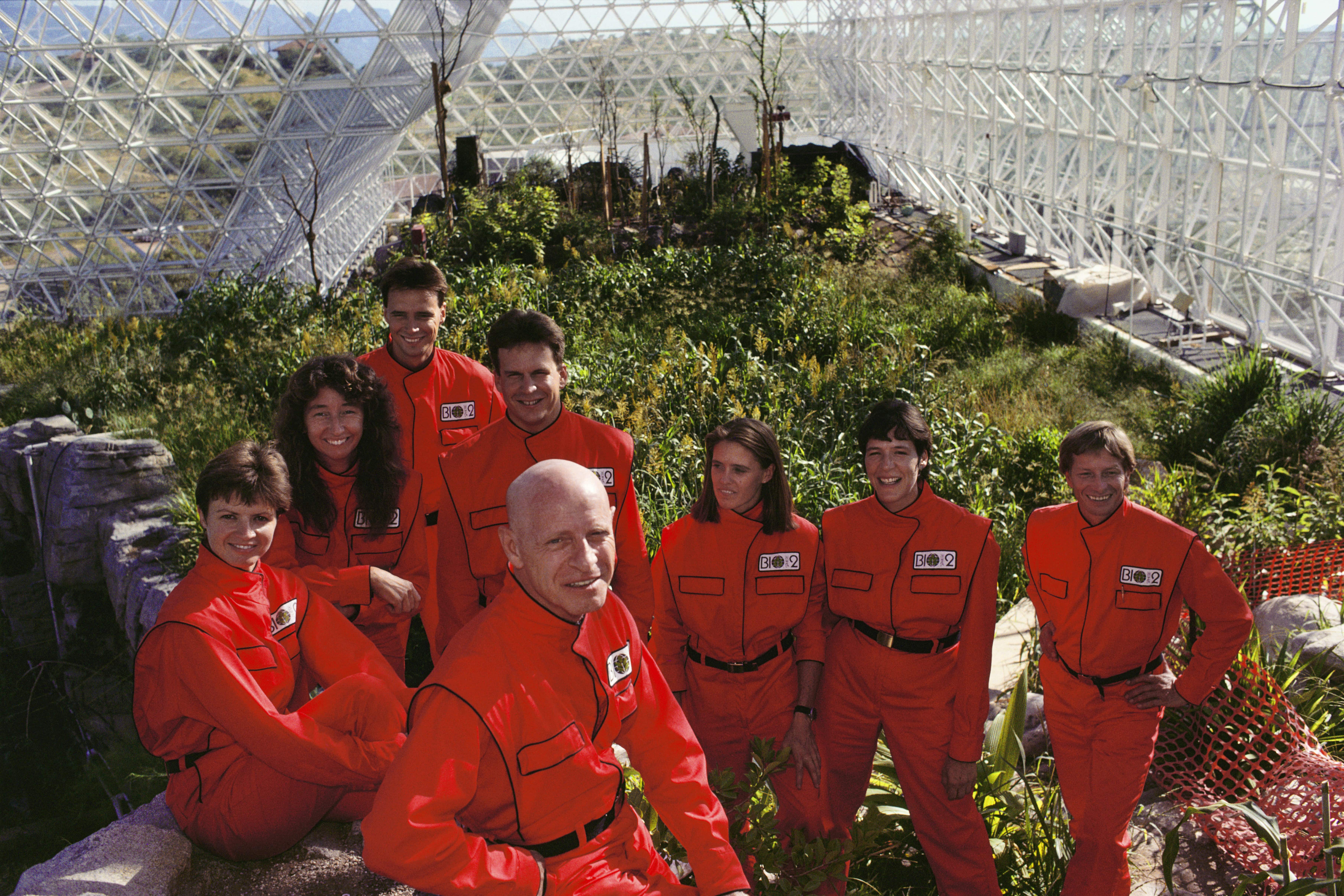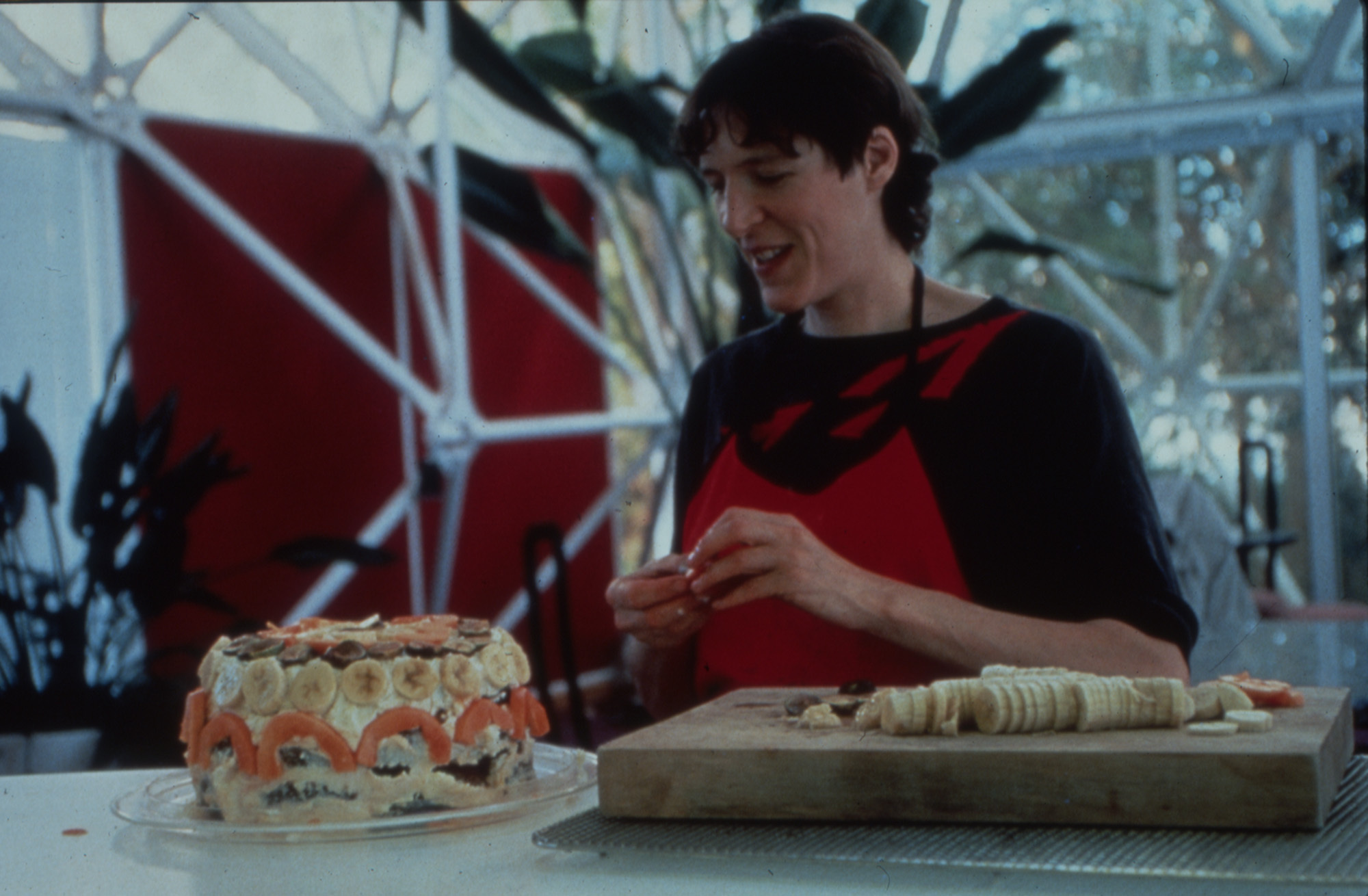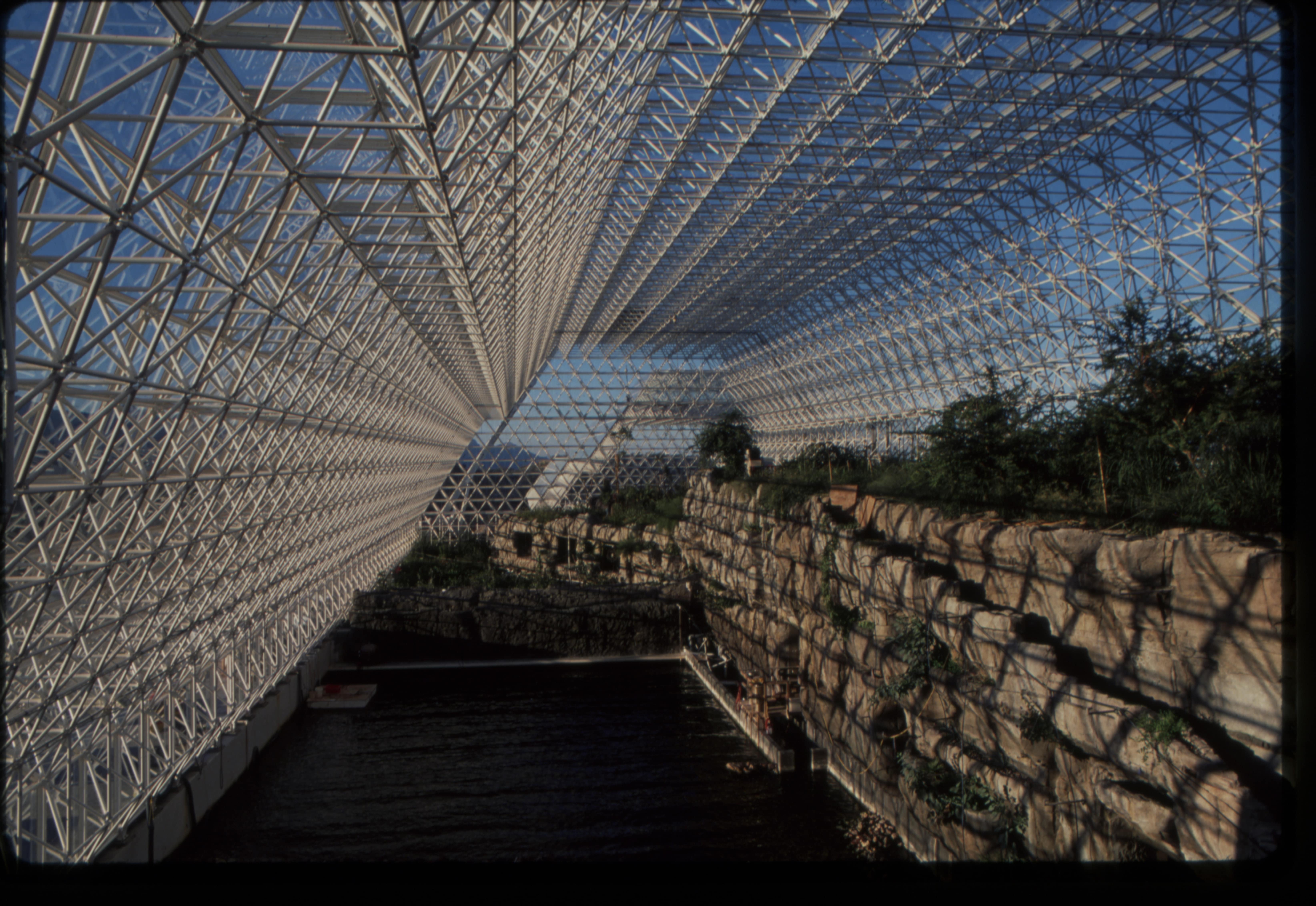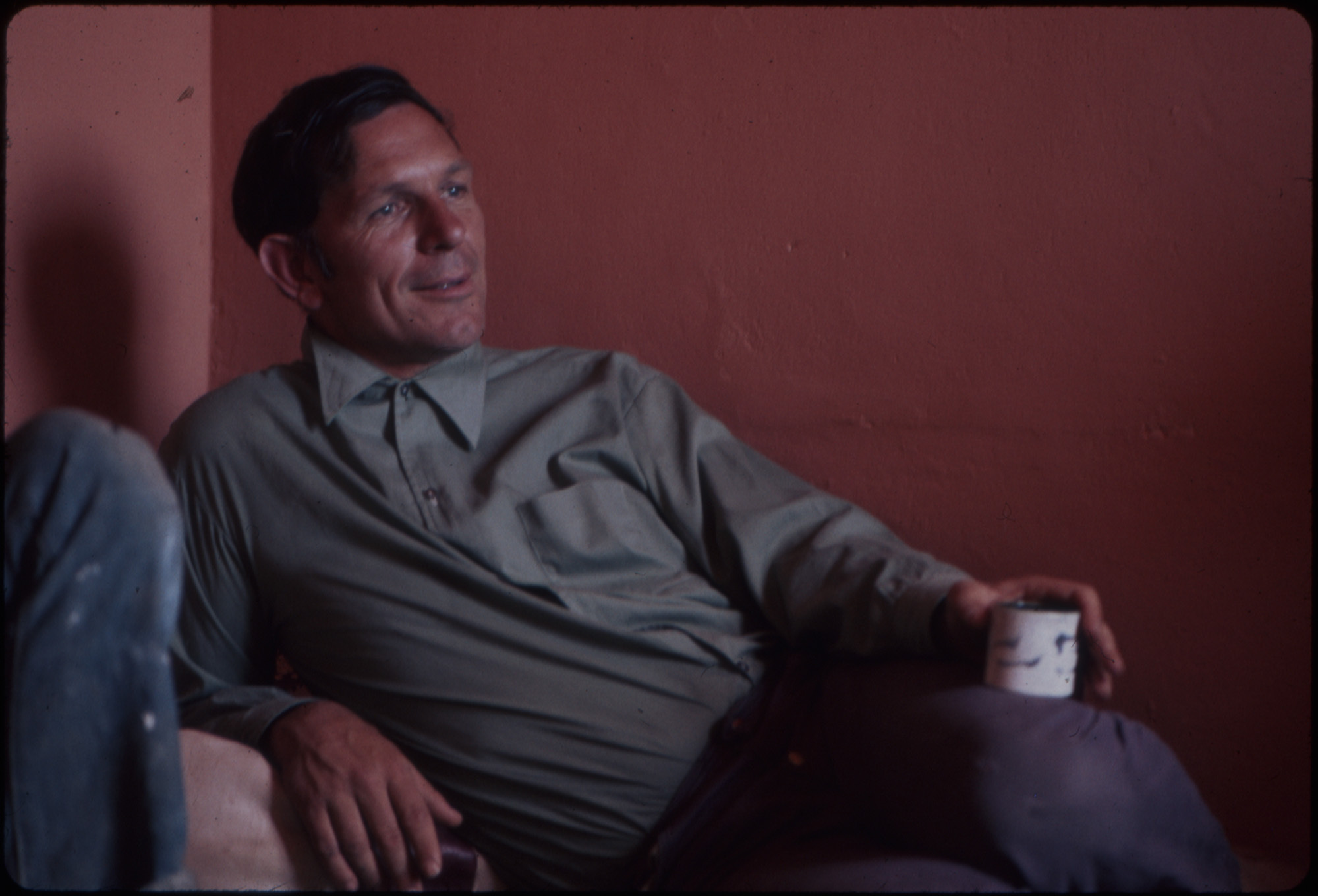Biosphere 2: Explore the habitat's history and mystery in these amazing photos
Almost 30 years ago, eight researchers entered a glass-walled recreation of Earth's collective ecosystems out in the Arizona desert and didn't emerge for two years as part of a radical experiment.
In these striking images from the original experiment, which began in 1991, you can explore the facility known as Biosphere 2 (so named because the researchers considered planet Earth to be "Biosphere 1"). To dive even deeper down this rabbit hole, check out "Spaceship Earth," a new documentary premiering on digital platforms and on the streaming platform Hulu May 8.
These images, taken from archival footage from the original Biosphere 2 mission and shown in the new documentary, help to tell the true story behind this unique experiment.
Video: 'Spaceship Earth' tells story of 8 'visionaries' in Biosphere 2 - Trailer
Related: 20 sci-fi movies and TV shows to binge watch on Netflix right now
Biosphere 2 was built from 1987 to 1991 in Oracle, Arizona. In 1984 the site was purchased by Space Biospheres Ventures and, in 1991, the first Biosphere 2 crew quarantine mission began. While it had some significant issues (a crew member had to once leave to go to the hospital, carbon dioxide levels were reaching unsafe levels and food was in short supply), the crew was able to complete their two-year stint in the odd, "bubble" environment.
However, the second mission folded mid-way through its duration in 1994 and the facility changed ownership and it was shifted to more traditional research. There are no longer sealed, crewed missions like this in the habitat, but the facility is currently used as a large-scale laboratory by scientists at the University of Arizona.
Review: 'Spaceship Earth' is a radical ride through science, quarantine & more
Breaking space news, the latest updates on rocket launches, skywatching events and more!
Inside Biosphere 2
Researchers originally built Biosphere 2 with the intention to create and study an artificial, self-sustaining biosphere, or the sum of all ecosystems that support life on Earth. The researchers wanted to explore and test whether they could recreate such a diverse and delicately balanced system in a closed environment. By living in it, they took this research a step further and tested whether the enclosure could support human life.
"The main objective of the experiment was to determine if an artificial biosphere could operate, increasing storages of energy and biomass, preserving a high level of biodiversity and biomes, stabilizing its waters, soils and atmosphere," Biosphere 2 inventor and research director John Allen and original Biosphere 2 crew member and ecologist Mark Nelson said in a paper they published on the experiment in 1997. They also wanted to know if the biosphere could provide "a healthy and creative life for humans working as naturalists, ecosystem scientists, and technicians," the researchers added.
The habitat, with its striking, futuristic architecture, houses a number of human-created biomes including a rainforest, coral reef, ocean and more. The "biospherians," who made up the crews who lived quarantined in the facility, even had livestock that lived as part of this unique, enclosed system.
Where things went wrong
The true story behind these quarantined missions in the 90s, which "Spaceship Earth" dives into, is as close to science fiction as reality gets.
While the first group of biospherians were able to finish their two-year quarantined mission, the problems that arose in the habitat garnered such negative media attention that the second crewed mission was shut down halfway through its intended duration.
In the biosphere, interpersonal issues and tensions rose alongside issues with the biomes themselves. In the first mission, food shortages and a lack of oxygen required oxygen to be pumped in and the media took this as a serious failure of the experiment. But, while the second mission was able to correct some of the issues that arose with the first mission, Space Biosphere Ventures, the company behind the experiment, was dissolved, the facility changed ownership and the mission was cut short. Amidst this turmoil, Allen, along with other executive team leaders, was pushed to resign from the project following public scrutiny about his methods.
Although the second mission ended early, these crewed missions were not failures. The team behind Biosphere 2 intended for these quarantined missions to be focused on research and development, and the biospherians were still able to collect an incredible wealth of data from their experiments and learn and explore. So, despite the unintended early ending, the mission still resulted in exciting exploration.
Still, despite the original intent of the biospherians to simply explore and conduct unique research, the Biosphere 2 enclosure's sci-fi-esque look, the second mission's abrupt end and Allen's public perception have created some negative public perceptions of the project. "Spaceship Earth" intends to set the record straight with what actually went on inside the habitat.
- Sci-Fi Classic 'Moon' Available on 4K Ultra HD for Apollo 11 Anniversary
- A complete guide to what 'Star Trek' to watch before 'Star Trek: Picard'
- 'The Expanse': Here's a Recap of Seasons 1-3 Ahead of Season 4
Follow Chelsea Gohd on Twitter @chelsea_gohd. Follow us on Twitter @Spacedotcom and on Facebook.
OFFER: Save 45% on 'All About Space' 'How it Works' and 'All About History'!
For a limited time, you can take out a digital subscription to any of our best-selling science magazines for just $2.38 per month, or 45% off the standard price for the first three months.

Chelsea “Foxanne” Gohd joined Space.com in 2018 and is now a Senior Writer, writing about everything from climate change to planetary science and human spaceflight in both articles and on-camera in videos. With a degree in Public Health and biological sciences, Chelsea has written and worked for institutions including the American Museum of Natural History, Scientific American, Discover Magazine Blog, Astronomy Magazine and Live Science. When not writing, editing or filming something space-y, Chelsea "Foxanne" Gohd is writing music and performing as Foxanne, even launching a song to space in 2021 with Inspiration4. You can follow her on Twitter @chelsea_gohd and @foxannemusic.









